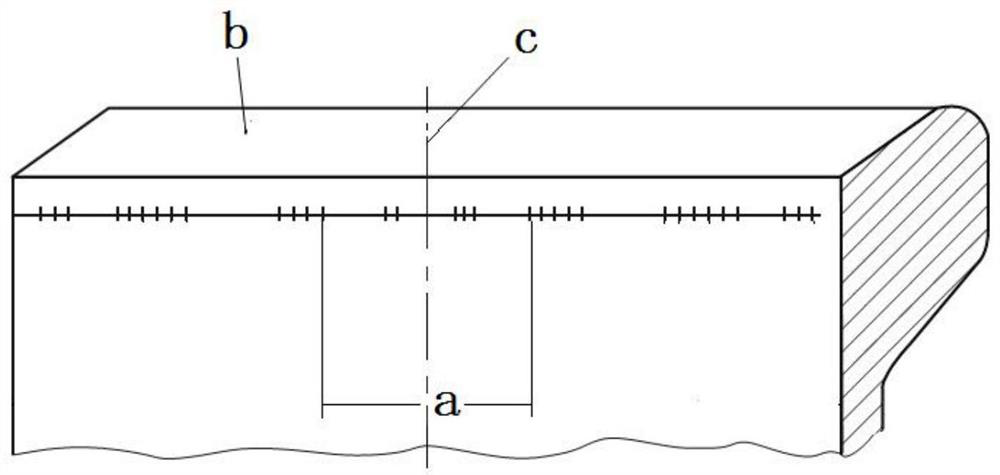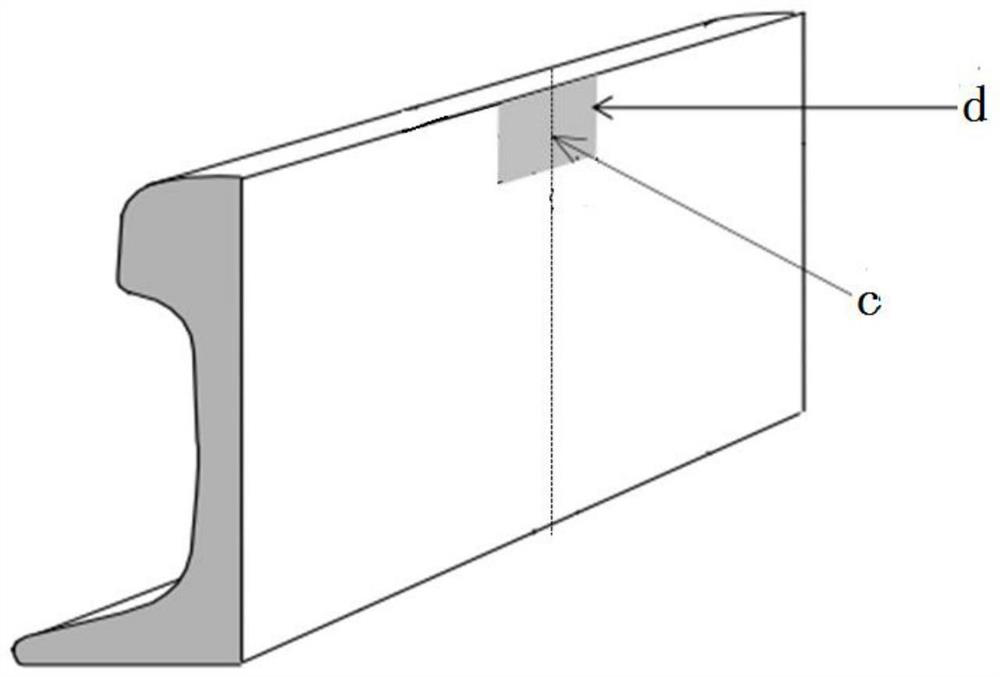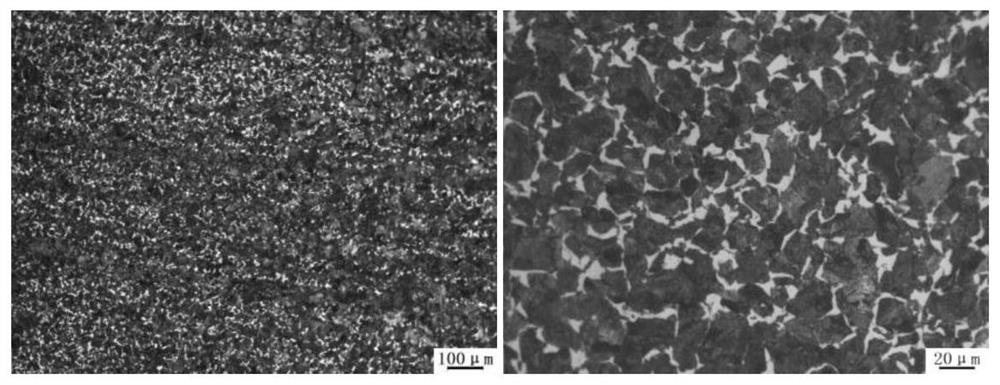A method for improving low temperature toughness of medium carbon steel rail welded joint
A technology of welding joints and low-temperature toughness, which is applied in the field of railway rail manufacturing, can solve problems such as brittle fracture, and achieve the effect of improving hardness and toughness
- Summary
- Abstract
- Description
- Claims
- Application Information
AI Technical Summary
Problems solved by technology
Method used
Image
Examples
Embodiment 1
[0037] The microstructure of the control rail base metal is 80% pearlite and 20% proeutectoid ferrite. The tensile strength of the rail base metal at room temperature (20-25°C) is 1080MPa, the elongation is 17%, and the U-shaped impact energy is 35J. Under the condition of -20℃, the U-shaped impact energy of the rail base metal is 29J. The chemical composition of the rail steel to obtain this microstructure must meet the following conditions: 0.50% C, 0.30% Si, 0.70% Mn, 0.1% Cr, 0.04% V, and the balance Fe and inevitable impurities. The heat treatment process of the rail steel with this microstructure must meet the following conditions: the billet is heated and rolled into a rail with a single weight of 60kg / m, and then left to stand and cooled in the air, when the temperature of the center of the top surface of the rail head drops to 790℃ The cooling medium is sprayed on the top surface of the rail head, the two sides of the rail head and the lower jaws on both sides of th...
Embodiment 2
[0042] The control rail base metal microstructure is 88% pearlite and 12% proeutectoid ferrite. The tensile strength of the rail base metal at room temperature (20-25°C) is 1080MPa, the elongation is 17%, and the U-shaped impact energy is 32J. Under the condition of -20℃, the U-shaped impact energy of the rail base metal is 27J. The chemical composition of the rail steel with this microstructure must meet the following conditions: 0.58% C, 0.45% Si, 0.90% Mn, 0.3% Cr, 0.045% V, and the balance Fe and inevitable impurities. The heat treatment process of the rail steel with this microstructure must meet the following conditions: the billet is heated and rolled into a rail with a single weight of 60kg / m, then it is left to stand and cooled in the air, when the temperature of the center of the top surface of the rail head drops to 840℃ The cooling medium is sprayed on the top surface of the rail head, the two sides of the rail head and the lower jaws on both sides of the rail he...
Embodiment 3
[0047] The microstructure of the control rail base metal is 90% pearlite and 10% proeutectoid ferrite. The tensile strength of the rail base metal at room temperature (20-25°C) is 1100MPa, the elongation is 16%, and the U-shaped impact energy is 32J; at -20°C, the U-shaped impact energy of the rail base metal is 28J. The chemical composition of the rail steel to obtain this microstructure must meet the following conditions: 0.58% C, 0.50% Si, 0.92% Mn, 0.35% Cr, 0.05% V, and the balance Fe and inevitable impurities. The heat treatment process of the rail steel with this microstructure should meet the following conditions: after the billet is heated and rolled into a 60kg / m single weight rail, it is left to cool in the air. Spray a cooling medium with a cooling rate of 5.0°C / s to the top surface of the rail head, both sides of the rail head and the lower jaws on both sides of the rail head to 380°C, then stop the accelerated cooling and continue to air-cool to room temperature...
PUM
| Property | Measurement | Unit |
|---|---|---|
| tensile strength | aaaaa | aaaaa |
| elongation | aaaaa | aaaaa |
| tensile strength | aaaaa | aaaaa |
Abstract
Description
Claims
Application Information
 Login to View More
Login to View More - R&D
- Intellectual Property
- Life Sciences
- Materials
- Tech Scout
- Unparalleled Data Quality
- Higher Quality Content
- 60% Fewer Hallucinations
Browse by: Latest US Patents, China's latest patents, Technical Efficacy Thesaurus, Application Domain, Technology Topic, Popular Technical Reports.
© 2025 PatSnap. All rights reserved.Legal|Privacy policy|Modern Slavery Act Transparency Statement|Sitemap|About US| Contact US: help@patsnap.com



